Pompeii’s story is as captivating as it is haunting. Once a vibrant Roman hub, this ancient city’s fate was sealed when Mount Vesuvius erupted in 79 AD, burying it under layers of ash and pumice. Today, visitors can explore Pompeii’s remarkably well-preserved remnants, uncovering the daily lives of its former inhabitants. With a local guide leading the way, you’ll uncover the city’s architectural marvels, discover intriguing artifacts, and gain a profound understanding of how this catastrophic event forever altered the course of Pompeii’s history. But as you wander through the ghostly streets, you can’t help but feel the weight of the tragedy that unfolded here so long ago.
Key Points
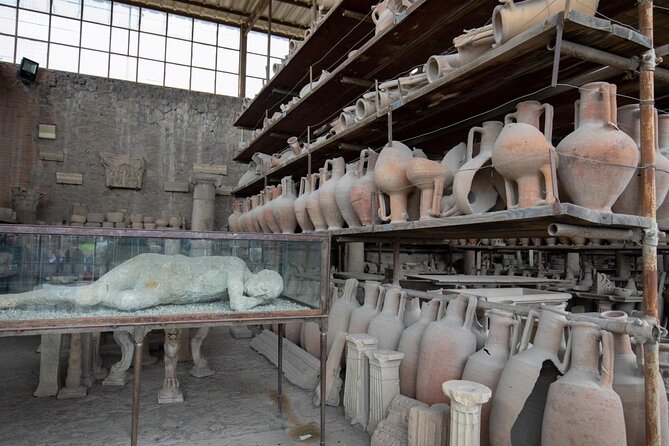
- Explore the remnants of daily life in Pompeii, including commercial and domestic scenes, revealed through well-preserved frescoes and artifacts.
- Discover the architectural marvels of ancient Pompeii, from the grand public buildings to the luxurious private homes, showcasing Roman engineering and lifestyle.
- Gain insights into the cultural and social dynamics of Pompeian society, from the vibrant atmosphere of the public spaces to the entertainment and civic life.
- Witness the dramatic impact of the eruption of Mount Vesuvius in 79 AD, as evidenced by the plaster casts of victims and the archaeological findings.
- Explore the city with a local guide, who can provide in-depth knowledge and context, enhancing your understanding of the life and death of this Roman city.
The Fateful Day: Pompeii’s Destruction

What doomed the ancient Roman city of Pompeii on that fateful day in 79 AD?
Mount Vesuvius, the volcano looming over the city, erupted violently, unleashing a deadly torrent of superheated ash, pumice, and toxic gases.
Within hours, Pompeii was buried under layers of volcanic debris, preserving the city and its inhabitants in a state of terror and agony.
The eruption caught the residents by surprise, leaving them little time to escape.
Archaeologists have uncovered harrowing scenes, such as families huddled together and individuals frozen in their final moments, providing a chilling glimpse into the city’s last hours.
The tragic fate of Pompeii serves as a stark reminder of the power of nature and the fragility of human existence.
You can also read our reviews of more guided tours in Pompeii
Uncovering the Buried Secrets
Centuries after the catastrophic eruption that entombed Pompeii, archaeologists have painstakingly excavated the ancient city, uncovering a wealth of artifacts and insights that have transformed our understanding of life in the Roman Empire. From exquisite frescoes and detailed floor mosaics to carbonized loaves of bread and the plaster casts of victims, the buried ruins have revealed an astonishingly well-preserved snapshot of daily life in a prosperous Roman city.
| Uncovered Artifacts | Insights Gained |
|---|---|
| Carbonized loaves of bread | Eating habits and food preparation |
| Plaster casts of victims | Dramatic details of the eruption’s impact |
| Exquisite frescoes and mosaics | Artistic and cultural achievements |
This trove of physical evidence has allowed historians to reconstruct Pompeii’s past with unprecedented clarity, shedding light on everything from its bustling economy to the private lives of its citizens.
Glimpsing Daily Life in Pompeii
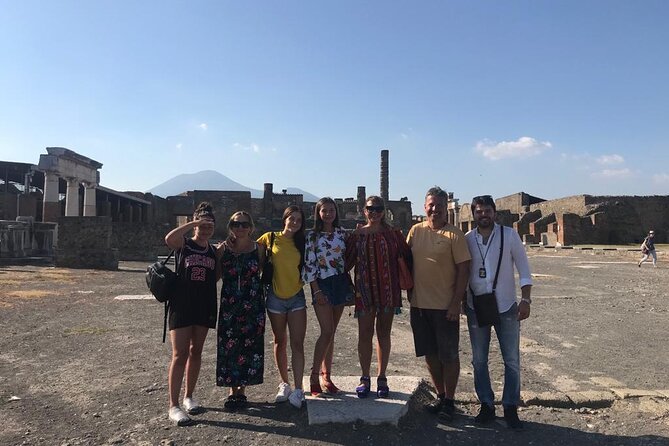
The excavations of Pompeii have revealed a remarkable trove of artifacts that offer a uniquely intimate glimpse into the daily lives of the city’s residents.
Archaeologists have uncovered everything from carbonized loaves of bread to delicate mosaics, shedding light on the routines, habits, and material culture of ancient Pompeians.
Remarkably well-preserved frescoes depict bustling commercial and domestic scenes, while remnants of ancient graffiti provide a window into the thoughts and interactions of the city’s inhabitants.
These physical remnants paint a vivid picture of a thriving, cosmopolitan urban center on the eve of its tragic demise.
The Tragic Fate of Inhabitants
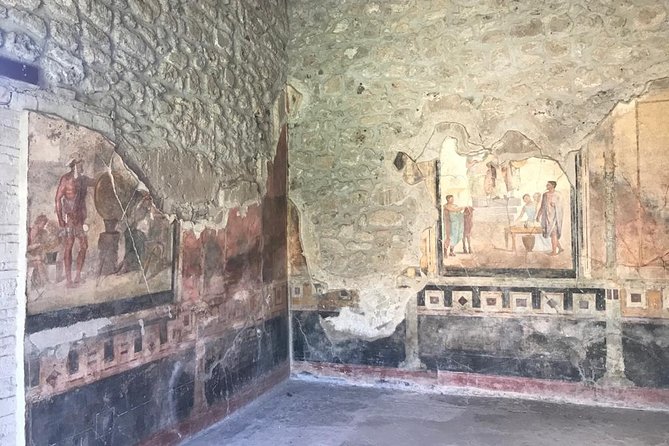
On that fateful day in 79 AD, Pompeii’s residents faced a sudden and devastating end as Mount Vesuvius erupted, unleashing a torrent of fiery ash and molten rock that engulfed the city.
Trapped in their homes, the people of Pompeii were overcome by the extreme heat and toxic fumes, succumbing to the volcanic onslaught.
Archaeologists have uncovered numerous casts of victims, forever preserving the final moments of their lives.
From families huddled together to individuals trying to flee, the ruins of Pompeii stand as a haunting testament to the tragic fate that befell its inhabitants.
This private tour offers a moving and sobering glimpse into the final days of the doomed Roman city.
Architectural Marvels of Ancient Pompeii
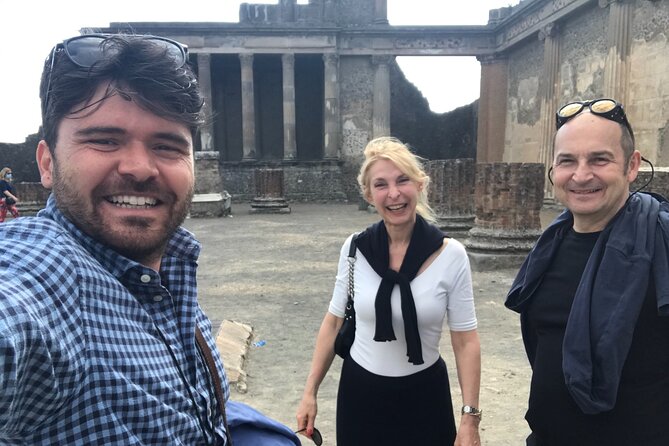
Pompeii’s architectural wonders captivated visitors even before the city’s fateful demise. The grand public buildings like the amphitheater and the forum showcased the Romans’ engineering prowess.
Private homes boasted colorful frescoes, intricate mosaics, and luxurious amenities like heated baths. The city’s layout was remarkably modern, with wide, paved streets, covered sidewalks, and advanced plumbing systems.
Visitors on the private Pompeii tour can marvel at these impressive structures that once bustled with life. The guide will share insights into how Pompeians lived, worked, and entertained themselves in these magnificent buildings, bringing the past to life in vivid detail.
You can also read our reviews of more city tours in Pompeii
- Naples Shore Excursion: Naples City and Pompeii Half Day Sightseeing Tour
- The Beautiful Pompeii, Two-Hour Tour to Discover the Hidden Places of the City
- Life and Death of the Roman City of Pompeii With a Local Guide. Private Tour
- Discover Pompeii on This Guided Walking Tour of the Buried City
- Pompeii the Buried City
- Skip-the-Line Pompeii Ruins & Naples City Center Private Tour with a Local Guide
Exploring the Forum and Theaters
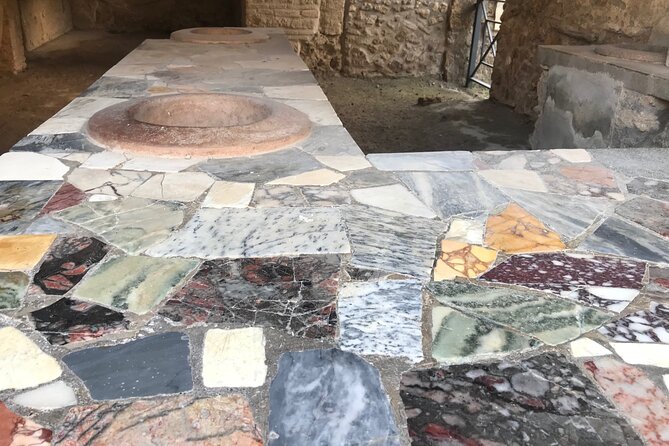
At the heart of Pompeii’s ancient city center lies the impressive Forum, where visitors can enjoy the bustling commercial and civic life of the Roman empire.
Nearby, the remarkably well-preserved theaters offer a glimpse into the city’s cultural and entertainment scenes. The Grand Theater, with its tiered seating and stage, hosted plays, concerts, and political speeches.
The smaller Odeon was used for more intimate musical performances.
Wandering through these spaces, one can almost imagine the lively crowds and vibrant atmosphere that once filled Pompeii’s streets and public squares before the catastrophic eruption of Mount Vesuvius.
Preserved Artifacts and Artworks
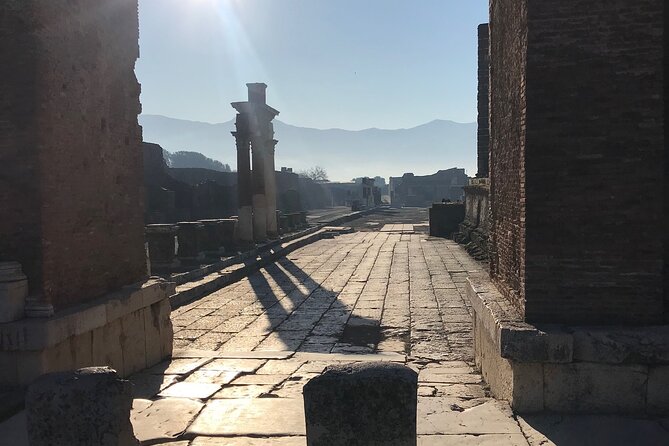
The preserved artifacts and artworks within Pompeii offer a captivating window into the daily life and culture of the ancient Roman city. From intricate mosaics and frescoes adorning the walls of elite villas to the utilitarian tools and household items used by the common people, these relics provide invaluable insights into Pompeii’s vibrant past. The table below showcases a selection of the most remarkable artifacts and their significance:
| Artifact | Description | Significance |
|---|---|---|
| Wall Paintings | Vibrant frescoes depicting scenes from mythology and daily life | Reflect the artistic sophistication and cultural interests of Pompeii’s residents |
| Bronze Statues | Exquisitely crafted sculptures of gods, heroes, and notable figures | Showcase the city’s appreciation for art and the divine |
| Preserved Carbonized Foods | Charred breads, fruits, and other edibles | Provide a tangible link to the culinary habits of ancient Pompeians |
| Gladiator Helmets | Ornate and well-preserved armor used in the city’s amphitheater | Highlight the importance of spectacle and entertainment in Roman society |
| Erotic Artwork | Explicit paintings and sculptures found in certain private homes | Reveal the bawdy and sensual aspects of Pompeian culture |
Insights From a Local Guide
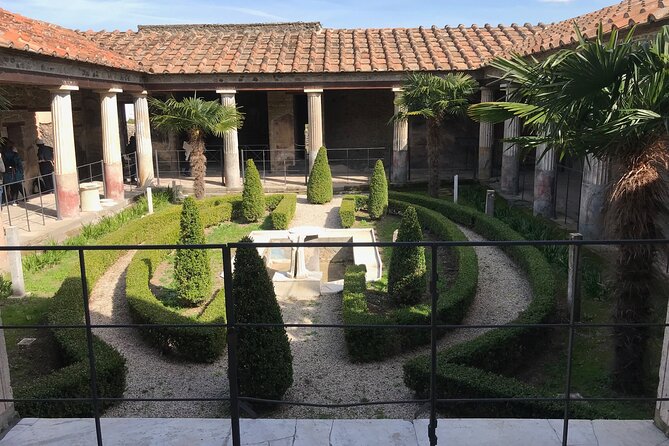
A local guide’s firsthand knowledge and storytelling bring the ruins of Pompeii to life, illuminating the city’s captivating history beyond the preserved artifacts.
Drawing on years of experience, the guide leads visitors through the archaeological site, painting vivid portraits of daily life in the doomed Roman city.
From the bustling marketplace to the opulent villas, the guide weaves together the stories of Pompeii’s residents, their triumphs and tragedies.
Visitors gain a deeper understanding of how Pompeii’s people lived, worked, and ultimately perished under the devastating eruption of Mount Vesuvius.
The guide’s insights breathe new life into the silent stones, transporting travelers back in time to the final moments of this once-thriving metropolis.
Frequently Asked Questions
Can I Bring Food and Drinks Inside the Archaeological Site?
Visitors can bring food and drinks into the Pompeii archaeological site, but it’s best to avoid consuming them inside the ruins out of respect for the historic site. Litter should be properly disposed of as well.
Is There a Place to Store Luggage or Large Bags During the Tour?
The tour does not provide storage for luggage or large bags during the Pompeii site visit. Visitors are advised to travel light and bring only essential items they can comfortably carry with them throughout the tour.
What Is the Dress Code for the Tour?
There’s no strict dress code, but comfortable walking shoes and weather-appropriate clothing are recommended. Visitors should avoid wearing revealing or overly casual attire out of respect for the historical site. Light layers are advisable for changeable weather conditions.
Are Photographs Allowed Throughout the Entire Tour?
Photographs are generally allowed throughout the Pompeii tour. The tour operator doesn’t mention any restrictions on photography, so participants can freely take photos during the entire experience to capture the historic site.
Can the Tour Be Customized to Focus on Specific Areas of Interest?
Yes, the private tour can be customized to focus on specific areas of interest. Travelers can discuss their interests with the guide to personalize the experience and ensure they see the sights most important to them.
The Sum Up
The haunting ruins of Pompeii offer a poignant window into the past, where the vibrancy of daily life collides with the tragic devastation wrought by Mount Vesuvius. Through the insights of a local guide, visitors can gain a profound understanding of this ancient Roman city’s rich cultural heritage and the fragility of human existence in the face of natural disaster.
More Guided Tours in Pompeii
- Pompeii Archaeological Park Skip-the-line Entry and Audio Guide
- Pompeii Private & Personalized Tour with archeology expert guide
- Skip-the-Line Best of Pompeii in one Day Tour w Local Guide & new opened houses
- Private Pompeii Tour with Fast-Entrance Tickets to the Ruins & Exclusive Guide
- Skip-the-Line Half-Day Private Tour Ancient Pompeii Highlights with Native Guide
- Pompei Skip The Line 2-Hours Guided Tour in English or Italian
More Tours in Pompeii
- Skip the line Pompeii Tour for Kids and Families
- Pompeii Private & Personalized Tour with archeology expert guide
- 4 Hour Private Walking Tour in Pompeii with Villa Dei Misteri
- Pompeii: Walking Tour with Archaeologist and Skip-the-Line Ticket
- Skip-the-Line Best of Pompeii in one Day Tour w Local Guide & new opened houses
- Private Pompeii Tour with Fast-Entrance Tickets to the Ruins & Exclusive Guide
More Tour Reviews in Pompeii
Not for you? Here's more nearby things to do in Pompeii we have reviewed
- Skip the line Pompeii Tour for Kids and Families
- Private Transfer from Naples to Rome
- Pompeii for kids
- Pompeii in 2 Hours with Archaeologist & Amphitheatre Visit
- Pompeii Archaeological Park Skip-the-line Entry and Audio Guide
- Pompeii Private & Personalized Tour with archeology expert guide
- 4 Hour Private Walking Tour in Pompeii with Villa Dei Misteri
- Pompeii: Walking Tour with Archaeologist and Skip-the-Line Ticket
- Discover the Ancient Ruins of Pompeii: Day Trip from Rome
- Skip-the-Line Best of Pompeii in one Day Tour w Local Guide & new opened houses
- Private Pompeii Tour with Fast-Entrance Tickets to the Ruins & Exclusive Guide
- Private Transfer from Naples to Pompei or Vice Versa
